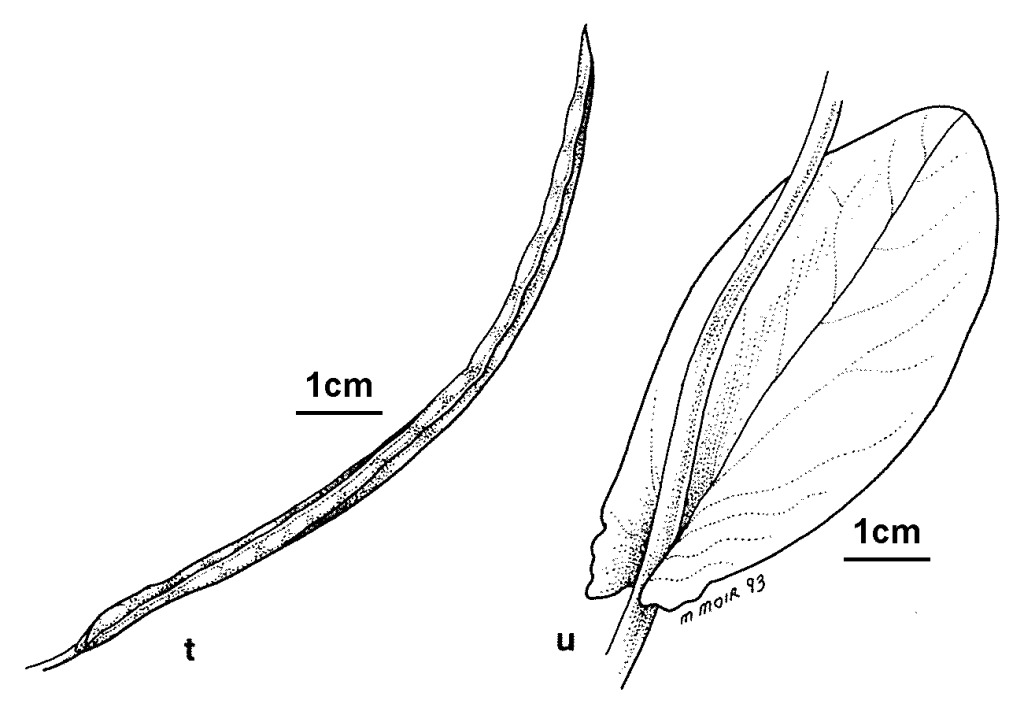Conringia orientalis
(L.) C.Presl Treacle MustardStems erect, usually 10–50 cm high, sparingly branched, glaucous. Leaves subsessile to sessile, auriculate and stem-clasping, obovate to elliptic, to about 11 cm long, margins thin and translucent. Sepals 5–8 mm long; petals 7–14 mm long, yellowish to green-white. Fruit erect to spreading, cylindric to often quadrangular, 4–14 cm long, c. 2 mm diam.; style slender, less than 4 mm long; pedicel 5–15 mm long; seeds ovoid, 2–3 mm long, dark brown to black. Flowers spring–autumn.
MuM, Wim, VRiv, EGU. Also naturalised SA, Qld, NSW, North America. Native in Europe to central Asia and northern Africa. Weed of agricultural land.
Characterized by its entire, clasping upper stem leaves with a thin translucent margin, and fruits with often angled valves and a persistent style less than 4 mm long.
Used as a salad vegetable in Europe.
Entwisle, T.J. (1996). Brassicaceae. In: Walsh, N.G.; Entwisle, T.J., Flora of Victoria Vol. 3, Dicotyledons Winteraceae to Myrtaceae, pp. 399–459. Inkata Press, Melbourne.
 Spinning
Spinning


